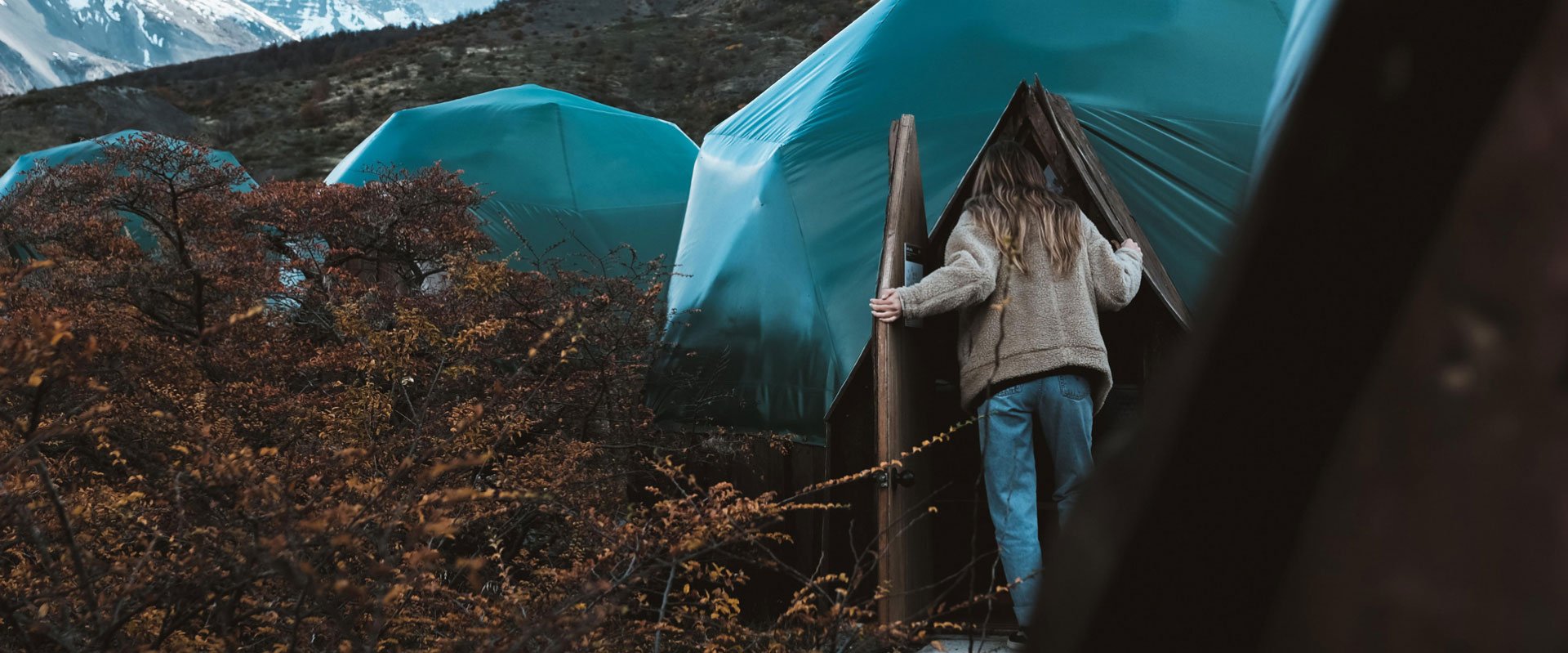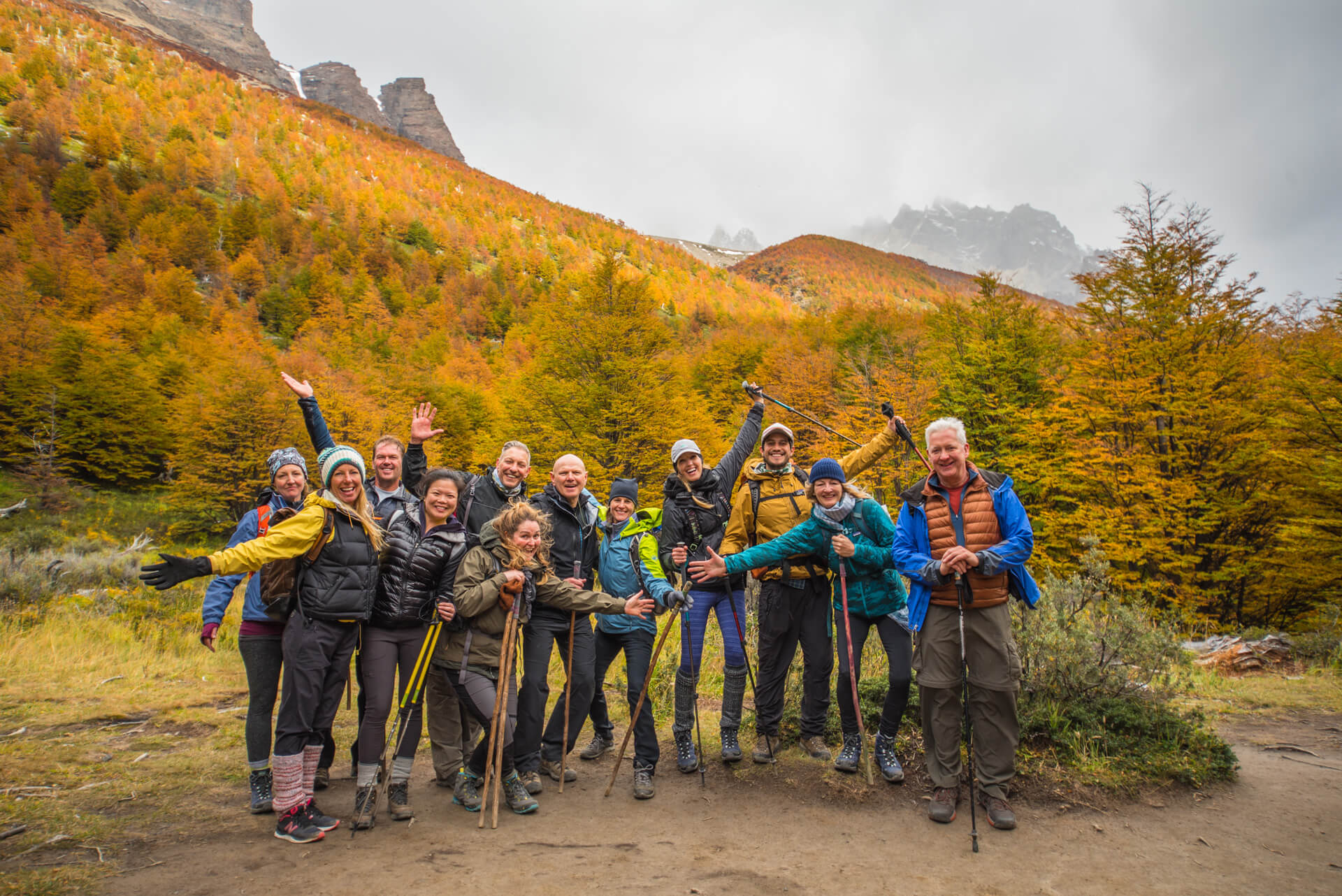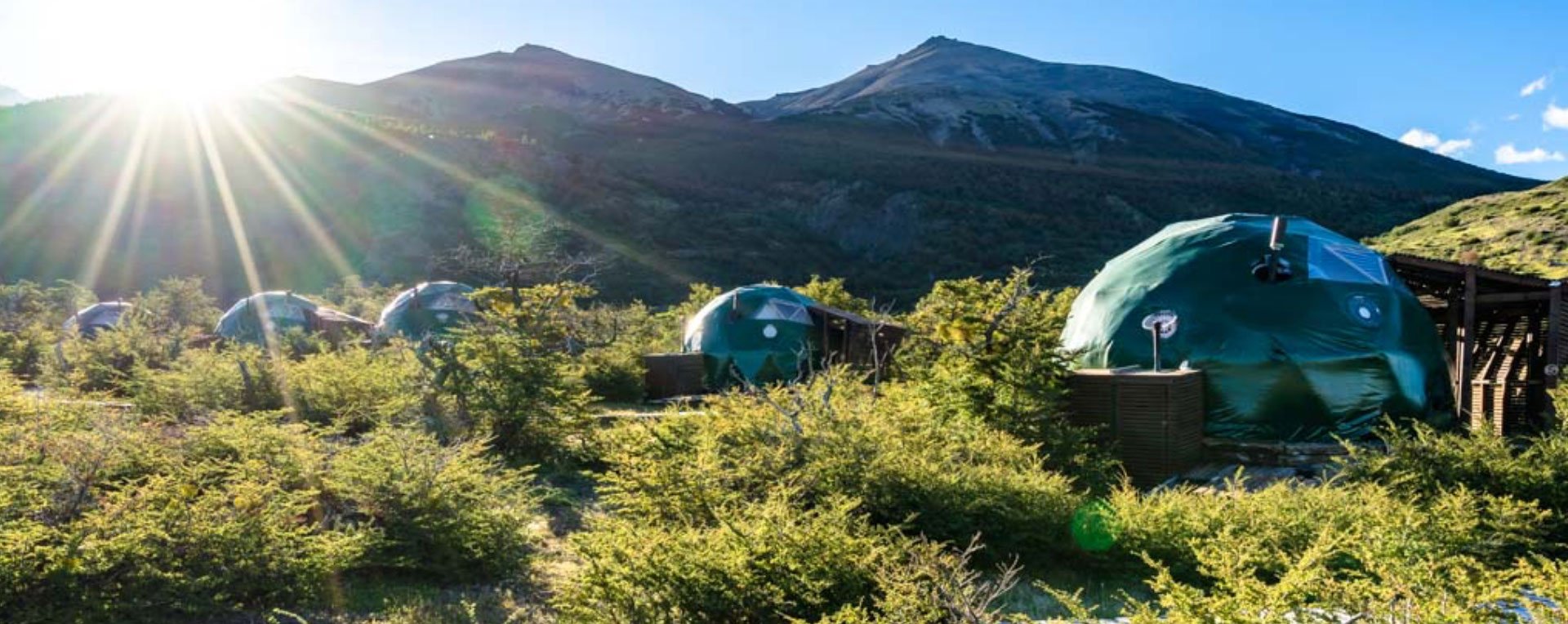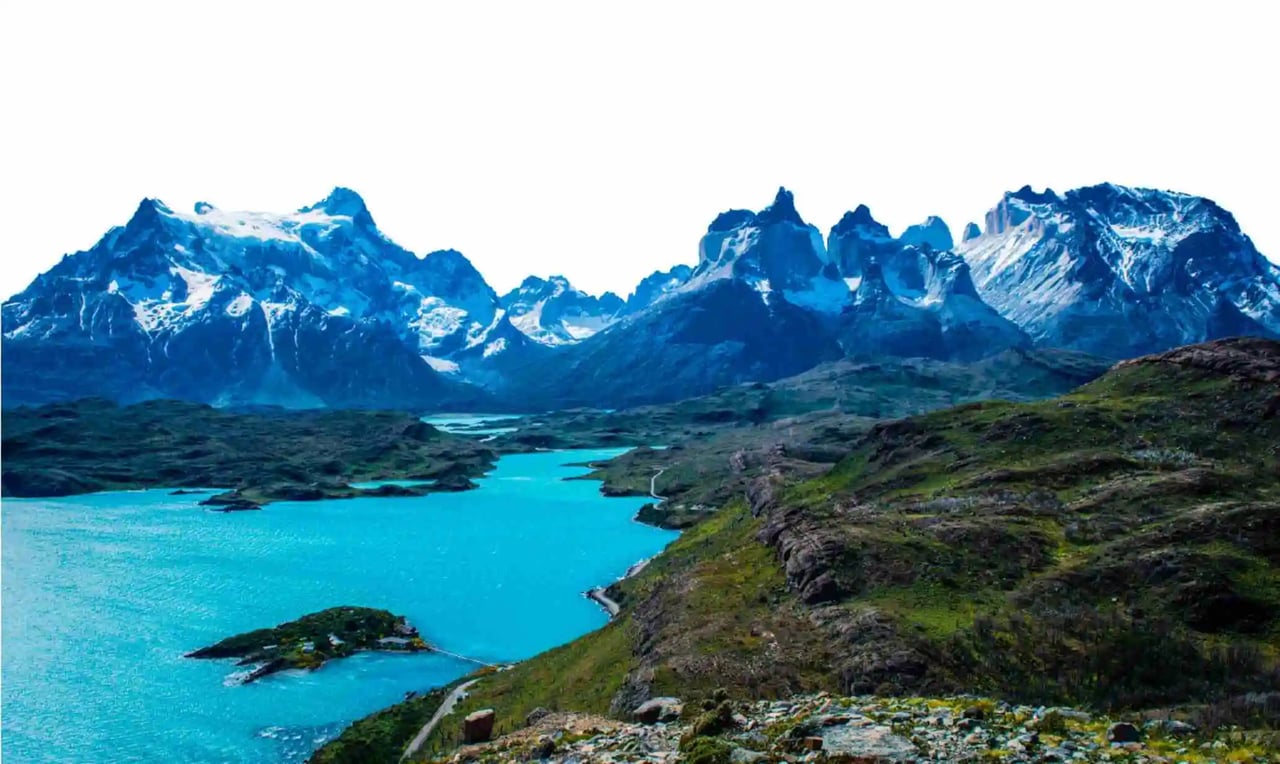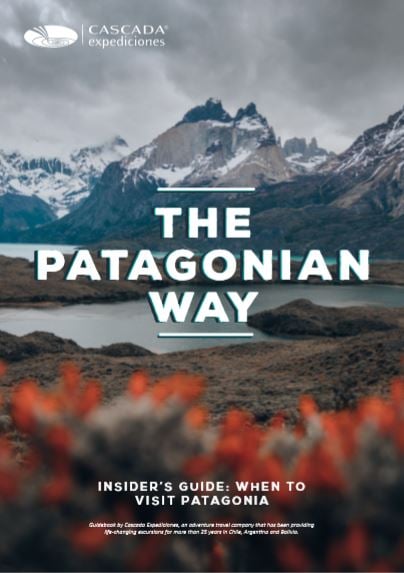Solar energy, hydropower, and a gas generator are the three sources we employ at EcoCamp to power our electricity needs. For heating, we rely on wood, pellets, and gas heating. The remote location in Torres del Paine National Park and our commitment to minimizing our environmental impact drive us to use renewable energy sources as much as possible.
Here's an overview!

Start of EcoCamp in 2001: no electricity in the domes
When the founders of EcoCamp first opened the hotel in 2001, it consisted of six domes, which we now refer to as Standard Domes. Over the years, they've undergone significant changes but still lack electricity or heating to maintain a close connection with the environment.
Kitchen staff, the maintenance crew, or reception could operate through hydropower. The nearby river and a turbine provided electricity.
Here's how it works:
Flowing or falling water possesses specific pressure and velocity. These properties drive a turbine since it has a shaft that moves due to the force of water, like a bicycle dynamo. Attached to this turbine is a generator, which converts the rotational motion of the shaft into electricity. This electricity is transported from the generator to an inverter. The inverter adjusts the electricity to the correct voltage for use. In our case, it converts from 24 volts DC to 220 AC.
"When we were conceptualizing the operational aspect of our hotel in 2001, we aimed to keep our energy consumption minimal and provide energy in a way that has the least impact on the surroundings. We didn't want a sauna, pool, or large rooms with air conditioning. At that time, the hotel was installed a hundred meters from our current location. The terrain had a height difference, and the river was nearby, making it ideal for generating electricity through hydropower," shares Yerko Ivelic, one of the three founders of EcoCamp.
.webp?width=893&height=595&name=First%20Domes%20at%20EcoCamp%20-%20Webp%20(1).webp)
Expansion of hydropower
Over the years, we've steadily expanded the number of turbines as the hotel has grown and thus required more energy. Currently, we operate four turbines, running 24/7, providing approximately 75% of the power we need, around 3000 to 3400 watts.
This method of energy provision has several benefits:
- It relies on a natural water flow. The water continues to flow indefinitely, making this system reliable.
- No fossil fuels are used in the electricity generation process via hydropower; it's a renewable source.
- Water turbines can last a long time, at least 50 years, and have low maintenance costs.

Solar energy as supplementary support
In 2017, we installed solar panels to harness sunlight optimally. Currently, there are six solar panels on the EcoCamp site, capable of fulfilling up to 15% of our energy needs. They prove particularly useful in the summer when there can be up to 17 hours of daylight in Torres del Paine.
A photovoltaic panel comprises two rigid glass plates sandwiching silicon solar cells. When sunlight hits them, a difference in charge is created between the positive charge at the top of the cell and the negative charge at the bottom, generating an electric current. An inverter then converts this direct current into alternating current for use.
On sunny days, our panels can generate up to 1600 watts. Like hydropower, this source is renewable and cannot be depleted like fossil fuels. It's also environmentally friendly since it doesn't emit greenhouse gasses.

Energy storage
To manage the consumption of these energy sources, we use a battery. When the solar panels produce at maximum capacity, and the water turbine is running full tilt, but we aren't consuming what we're generating, we store the surplus. It's an automated system that allows us to draw from our reserves during nighttime or high energy usage, such as evenings when everyone returns from activities and dinner preparation begins.
If our reserves run out and we can't generate enough energy but still consume energy, we activate a third source: our gas generator. Once the energy level from our renewable sources rises again, the gas generator automatically shuts off.

Gas generator
The gas generator burns LPG (liquefied petroleum gas). LPG is a fossil fuel and, hence, not environmentally friendly. Still, compared to diesel or gasoline, it emits fewer harmful substances such as carbon dioxide (CO2), carbon monoxide (CO), and nitrogen oxides (NOx).
Essentially, the device operates like an internal combustion engine, similar to a car. Instead of propelling wheels, it sets a shaft in motion. This shaft is connected to a generator that produces electricity.
We also installed gas heaters to warm our Superior Domes and to provide electricity to the part of EcoCamp where staff sleep and work.
Heating in Suite and Community Domes
We employ two more energy sources to heat our hotel: wood and pellets.
In the Suite Domes, stoves for burning wood with a double combustion system are installed. This system ensures efficient wood usage. Less wood is burned, and the combustion is slower yet gives enough warmth. Initially, the wood is combusted, and the airflow is regulated to convert a large portion of the energy into heat. Then, a second combustion phase introduces additional air at the top to burn any uncombusted gasses and particles further, resulting in extra heat and reduced emission of harmful gasses.
The wood we use comes from certified forests. These forests are managed and harvested sustainably and responsibly.
Our Community Domes, where guests dine and receive briefings, are heated with pellet stoves. Pellets are compressed sawdust or wood waste. The pellet stoves are programmed to provide heat when needed, such as during breakfast or dinner.

Thermosyphons for shared bathrooms
To heat the water for the standard domes’ shared bathrooms, we employ thermosyphons. This system involves a water reservoir positioned on top of a solar panel. Solar energy is captured by the solar panel, preheating the water in the reservoir. Subsequently, we use gas to heat the water further to a suitable temperature for showering.
.webp?width=893&height=608&name=7sustainable-design%20(1).webp)
Offsetting CO2 emissions
To conclude, we use a mix of renewable and fossil fuels to provide EcoCamp, its staff, and its guests with electricity and warmth. But we are continually exploring ways to increase our reliance on renewable energy.
For instance, we once experimented with a wind turbine, but this wasn't an ideal energy source due to the erratic wind patterns in Torres del Paine. Some days, powerful winds are present, causing the wind turbine to stop rotating as a protective measure, while other days, there is no wind at all. Additionally, we are considering installing more solar panels.
Nevertheless, we consider it vital to offset our CO2 emissions. Hence, we calculate the emissions from all our processes (transportation, offices, hotel, etc.), convert them into dollars, and invest them in global sustainability projects. For example, we contribute to protecting the Cordillera Azul National Park and its local communities in Peru.
Want to know more about the sustainability vision at EcoCamp? Check out our website or watch this video.

